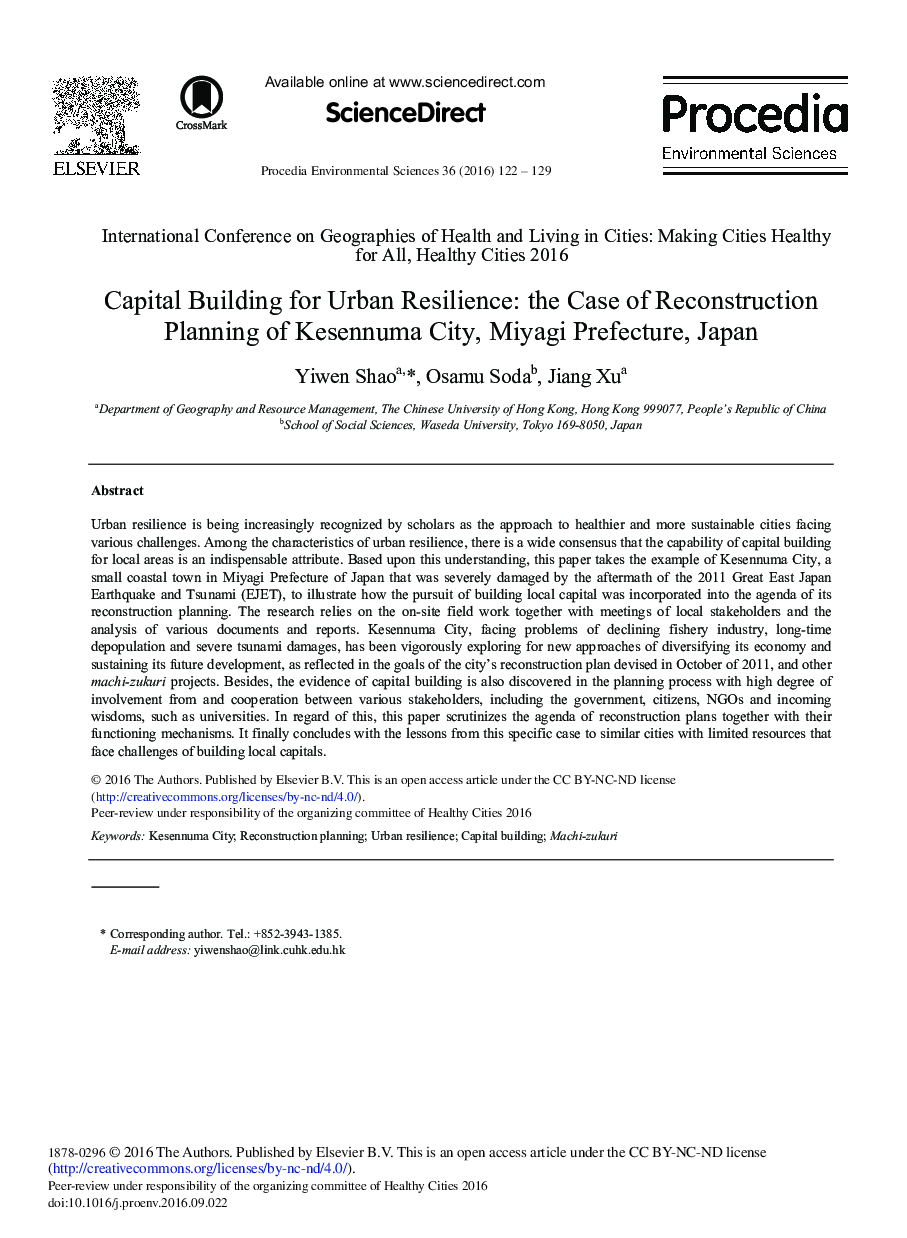| Article ID | Journal | Published Year | Pages | File Type |
|---|---|---|---|---|
| 4401336 | Procedia Environmental Sciences | 2016 | 8 Pages |
Urban resilience is being increasingly recognized by scholars as the approach to healthier and more sustainable cities facing various challenges. Among the characteristics of urban resilience, there is a wide consensus that the capability of capital building for local areas is an indispensable attribute. Based upon this understanding, this paper takes the example of Kesennuma City, a small coastal town in Miyagi Prefecture of Japan that was severely damaged by the aftermath of the 2011 Great East Japan Earthquake and Tsunami (EJET), to illustrate how the pursuit of building local capital was incorporated into the agenda of its reconstruction planning. The research relies on the on-site field work together with meetings of local stakeholders and the analysis of various documents and reports. Kesennuma City, facing problems of declining fishery industry, long-time depopulation and severe tsunami damages, has been vigorously exploring for new approaches of diversifying its economy and sustaining its future development, as reflected in the goals of the city's reconstruction plan devised in October of 2011, and other machi-zukuri projects. Besides, the evidence of capital building is also discovered in the planning process with high degree of involvement from and cooperation between various stakeholders, including the government, citizens, NGOs and incoming wisdoms, such as universities. In regard of this, this paper scrutinizes the agenda of reconstruction plans together with their functioning mechanisms. It finally concludes with the lessons from this specific case to similar cities with limited resources that face challenges of building local capitals.
